Zhejiang Sci-Tech University is located in the historical and cultural city of Hangzhou. It is a century-old school with profound cultural heritage, distinctive engineering school, and comprehensive university with multiple disciplines. The predecessor of the school, Sericulture Hall, was founded in 1897 by Hangzhou prefect Lin Qi to realize the ambition of saving the country through industry and education. It is one of the earliest new education institutions in my country. In 1908, it was upgraded to Higher Sericulture School. From the Revolution of 1911 to the eve of liberation, due to the turbulent times, the school changed its name and moved its site several times. It survived and persisted in the vicissitudes of life. After the founding of New China, the school continued to forge ahead and drew a new chapter in history. The school began to recruit undergraduates in 1959, was named Zhejiang Silk Institute of Technology in 1964, began to recruit postgraduates in 1979, and was awarded the right to confer master's degrees in 1983. In 1999, it was renamed Zhejiang Institute of Engineering. In 2004, it was renamed Zhejiang Sci-Tech University. In 2006, it was awarded the right to confer doctoral degrees. In 2017, the school was selected as a key university in Zhejiang Province. Today, Zhejiang Sci-Tech University is mainly engineering-oriented, with distinctive characteristics and outstanding advantages. It has coordinated development of multiple disciplines such as science, engineering, literature, economics, management, law, art, and education. The school has entered a new development pattern of "three campuses and one center", with 19 colleges (teaching and research departments) and 1 independent college. There are 37,759 full-time students (including independent colleges), including 8,385 graduate students. The school has steadily promoted the construction of disciplines and majors. It has 1 provincial peak discipline, 1 provincial advantageous and characteristic discipline, and 8 provincial first-class disciplines; the chemistry discipline ranks in the top 2‰ of ESI disciplines in the world, the materials science and engineering disciplines are in the top 3‰ of ESI global rankings, and the botany and zoology disciplines are in the top 1% of ESI global rankings. There are 59 undergraduate majors, including 28 national first-class undergraduate major construction points of the "Double Ten Thousand Plan", 8 national (Ministry of Education) characteristic majors, 1 Ministry of Education comprehensive reform pilot major, 6 Ministry of Education "Excellent Engineer Education and Training Program" pilot majors, 9 provincial first-class undergraduate major construction points of the "Double Ten Thousand Plan", 8 majors certified by the Ministry of Education for engineering education, 2 majors certified by the Ministry of Housing and Urban-Rural Development, and 2 majors certified by the new liberal arts. The school adheres to the principle of moral education and continues to promote education and teaching reform. It has 3 national experimental teaching demonstration centers, 2 national virtual simulation experimental teaching demonstration centers, 2 national engineering practice education centers, 4 national virtual simulation experimental teaching projects, 1 national off-campus practice education base for college students, 3 provincial key support modern industry colleges, and 1 national maker space. The school was selected as a national innovation and entrepreneurship education practice base, a national college practice education innovation and entrepreneurship base, one of the top 50 colleges with typical experience in graduate employment in the country, and one of the top 50 colleges with typical experience in innovation and entrepreneurship in the country by the Ministry of Education. It has 23 national first-class courses, 4 national high-quality video open courses, 5 national high-quality resource sharing courses, 2 national bilingual teaching demonstration courses, 2 brand courses for English-taught courses for international students in China of the Ministry of Education, and won 1 first prize and 4 second prizes for national teaching achievements. The school has a strong faculty. There are 2,680 faculty and staff on campus, including 354 with senior professional titles and 722 with associate senior professional titles. There are 1 academician of the Chinese Academy of Engineering, 2 academicians from developed countries, 1 national outstanding professional and technical talent, 7 people selected for the National Special Support Program for High-level Talents, 7 people selected for the National Overseas Talent Introduction Program, 3 winners of the National Natural Science Foundation Outstanding Young Scientist Fund, 4 winners of the Excellent Young Scientist Fund, 5 people selected for the Ministry of Education's major talent projects, 5 national candidates for the "New Century Hundred Thousand Talents Project", 1 young and middle-aged expert with outstanding contributions to the country, 2 cultural celebrities and "four batches" of talents, 10 people selected for the Ministry of Education's "New Century Excellent Talent Support Program", 3 young and middle-aged science and technology innovation leaders of the Ministry of Science and Technology, 12 experts enjoying special government subsidies, and 32 other national talents and experts. The fiber material science and engineering teaching team was selected into the third batch of Huang Danian-style teaching teams in national universities. In addition, a group of well-known experts and scholars at home and abroad were hired as part-time professors and Jinsha scholars. The school insists on serving the major needs of national and regional development and strives to enhance scientific and technological innovation. It has a number of high-level scientific research platforms: 3 national and local joint engineering research centers, 3 national international science and technology cooperation bases, 1 key laboratory of the Ministry of Education, 1 collaborative innovation center jointly built by the Ministry of Education and the province, 1 engineering research center of the Ministry of Education, 1 joint laboratory of international cooperation of the Ministry of Education, 1 key laboratory of the Ministry of Culture and Tourism, 1 provincial technology innovation center, more than 40 provincial key laboratories, provincial engineering research centers and other provincial and ministerial science and technology platforms, 4 provincial philosophy and social science key research bases and other provincial and ministerial social science platforms, 1 national technology transfer demonstration institution, and 1 provincial key science and technology intermediary service institution. The school has completed a series of national science and technology plan projects and national, provincial and ministerial fund scientific research projects in many fields, and won 8 second prizes of national technological invention, 8 second prizes of national science and technology progress, 1 third prize of national science and technology progress, 1 Lu Xun Literature Award, 2 science and technology innovation awards of the Ho Leung Ho Lee Foundation, and more than 370 provincial and ministerial awards since 2016. The school has established 18 local research institutes, and combined with 32 technology transfer branches, it has gradually formed a technology transfer and transformation network that basically covers the entire province and radiates outside the province. The comprehensive indicators of scientific and technological work have always been among the top universities in Zhejiang Province. The school adheres to the principle of open education and has established cooperative relations with 155 educational and scientific research institutions in 46 countries and regions. It has established a non-independent legal entity Sino-foreign cooperative education institution, the Marangoni Fashion Design Institute of Zhejiang Sci-Tech University, with the Marangoni Institute (France), and has held 4 Sino-foreign cooperative education projects with North Carolina State University and the Fashion Institute of Technology of the State University of New York. It has co-built 2 Confucius Institutes with the University of Mauritius and the University of Suriname, and the education of international students has developed rapidly. Zhejiang Sci-Tech University, which has a history of 127 years, will continue to uphold the fine tradition of "seeking knowledge and truth, innovation and entrepreneurship", practice the school motto of "virtue and far-reaching, erudition and practice", promote the fine school spirit of "seeking truth and being honest", seize new opportunities in the new era, bravely undertake new missions, and strive to accelerate the construction of a distinctive high-level research university!
-

Tsinghua University
-

Peking University
-

Fudan University
-

Wuhan University
-

Zhejiang University
-

Nanjing University
-

Sun Yat-sen University
-

Tongji University
-

Renmin University of China
-

Jahrom University of Medical Sciences
-

Mesoamerican University
-

Istmo University
-
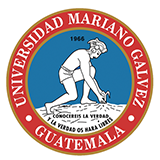
Mariano Galvez University of Guatemala
-
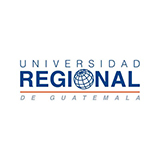
Regional University of Guatemala
-
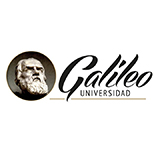
Galileo University
-
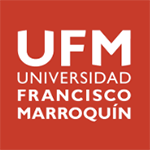
Francisco Marroquín University
-

Rafael Landívar University
-
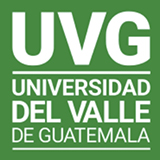
University of the Valley of Guatemala
-
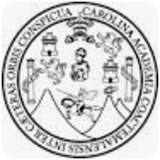
University of San Carlos of Guatemala
-

Technological Institute of Tlaxcala Plateau
-

Golfo University
-
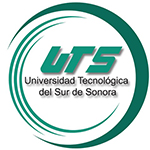
Technological University of South Sonora
-
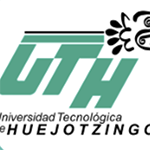
Technological University of Huejotzingo
-
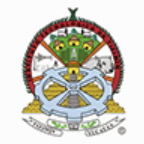
Tizimín Institute of Technology
-
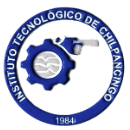
Chilpancingo Institute of Technology

